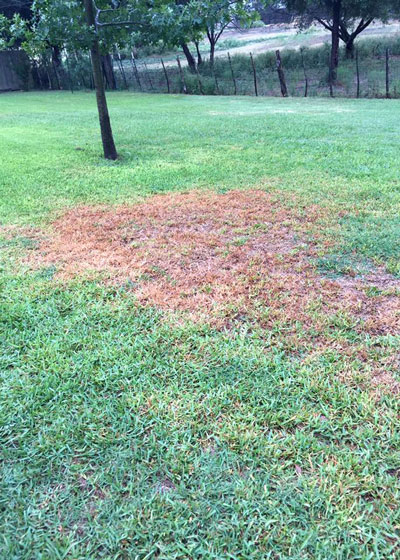Question of the Week 1: September 14, 2017
“Neil, what’s wrong with my St. Augustine? Is this some kind of fungus?”

Photo: FB friend Travis H. posted this within the past few days asking what might be happening to his lawn.
And the answer is…
This is ongoing damage of chinch bugs. Normally they’re problems in late June, July and August (earlier and later in deep South Texas where summers are longer).
Chinch bug damage becomes almost instantly recognizable to anyone who works around turfgrass. We’ve talked about it before here already this summer, but I’m still getting questions about it right now – many in the past week.
Facts to help you diagnose chinch bugs…
• Almost exclusively in St. Augustine;
• Always in hottest, sunniest part of the yard;
• Grass will appear dry, but will not rebound after you water it;
• Often return to same places in lawn every summer, so watch there first;
• To see chinch bugs, get on hands and knees in hot mid-afternoon sun and part the grass with your fingers. Look for diamond-shaped, BB-sized insects with irregular white diamonds on their wings at interface of dead and green grass;
(The old idea of pushing coffee can with both ends cut out into ground, then filling with water is preposterous in most soils – you’ll break your hands or bend the can.)
• Chinch bugs do kill grass, so treat at first evidence;
• Nurseries, hardware stores and other garden supply centers have several options in control products. I would probably still treat if you find them.

Photo: Courtesy University of Georgia Center for Urban Agriculture and David Shetlar of The Ohio State University. Various stages of chinch bug development. Click image for larger view.
